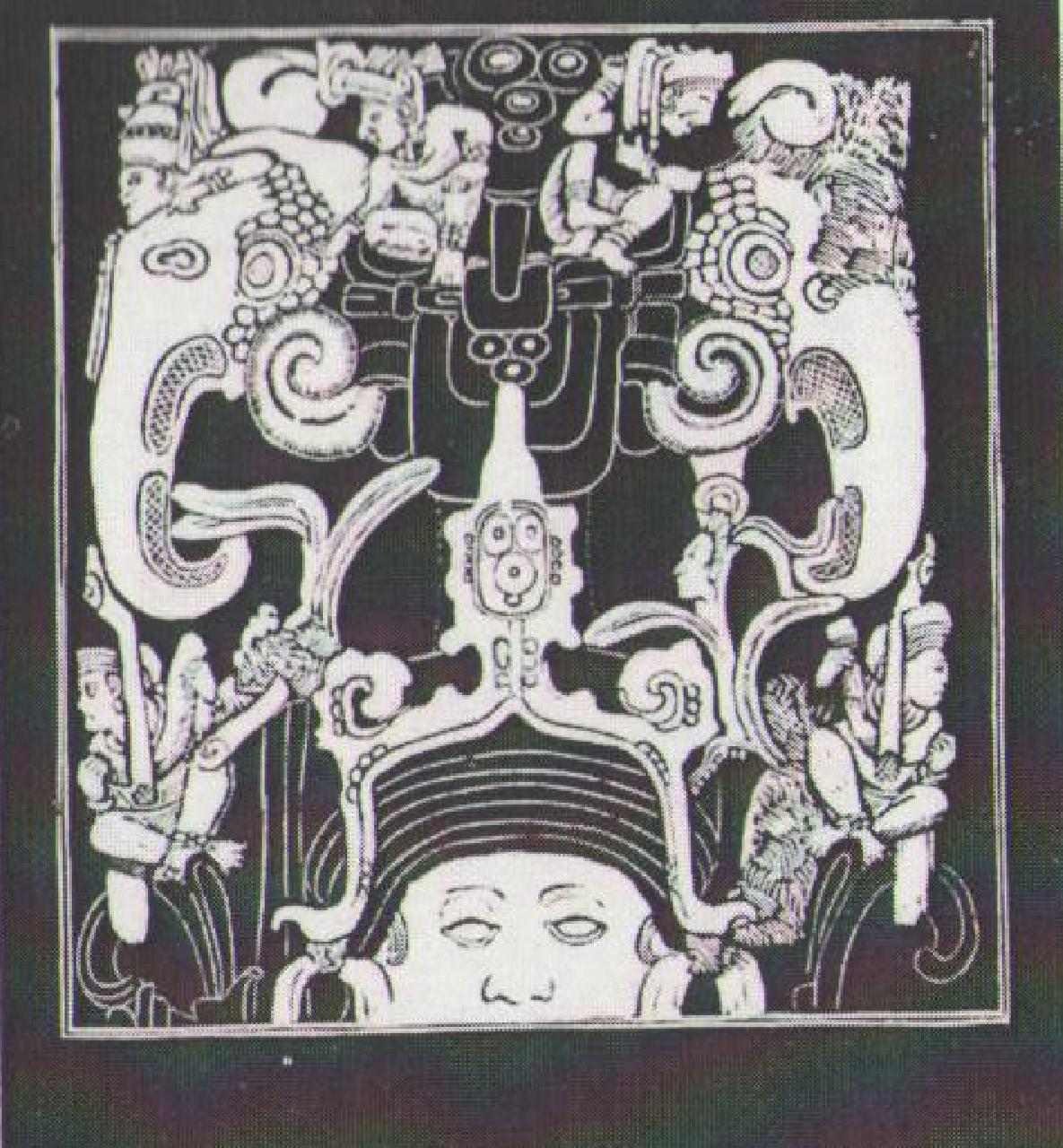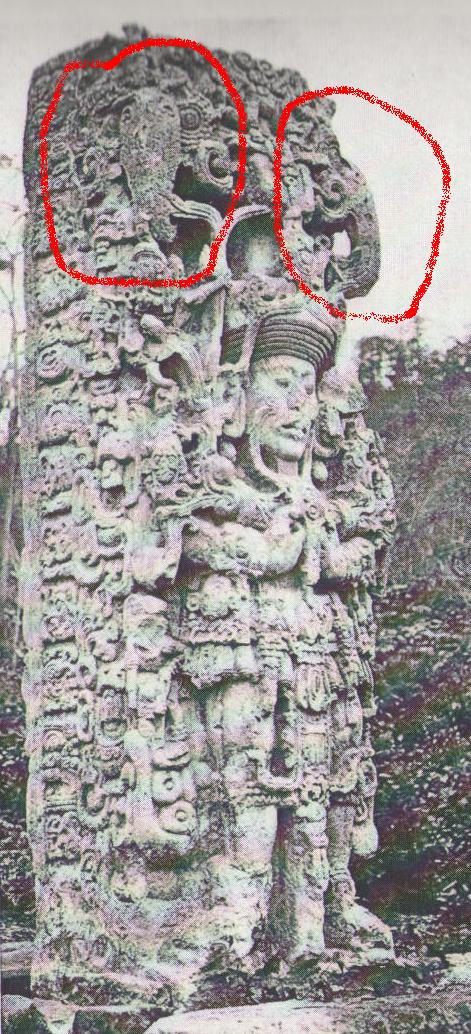Elephants in Eighth-century Honduras? July 23, 2010
Author: Beach Combing | in : Medieval , trackback
For the third night of Elephant Week, ‘the freakish fringe history of the largest land mammal’, Beachcombing wants to share a remarkable series of images relating to Stela B at the Maya site of Copán in what is today Honduras.
Professor Elliot Smith’s wrote an extraordinary book in 1924 alleging contact between the Maya and Asia in the eighth century.
His proof?
The stela above is supposed to show two elephants being driven by mahout! Beachcombing has crudely put red around the two elephants.
Elliot Smith had the decency, unlike some we can mention, to accept that this elephant was not actually brought to Honduras, but that the ‘motif’ arrived with travellers from south-east Asia, about nine centuries before most people think that they got to central America.
The difficulty is that the ‘elephants’ have also been identified as tortoises, macaw (the establishment view), whales, tapir and even woolly mammoths!
Certainly tracing any animal here is a bit of an uphill battle. Beachcombing took ten minutes just to find the trunks, but then he’s a special case.
As one early critic had it: ‘To sum up the superficial for and against the elephant interpretation: Professor Elliot Smith’s theory hangs upon recognising as an eye and an ear of a tuskless elephant what most critics regard as a nostril and an eye respectively of a macaw.’
Much has been made of the fact too that the ‘elephants’ are missing tusks (that is hardly surprising given the nature of the carving), but far more seriously the characteristic elephant ears!
So we leave readers with Elliot Smith’s re-elaboration of Stela B.
Is this a monument to his genius, casting a long, penetrating light across the dark continents, back from Honduras towards the Nile Delta?
Or is it, rather, a monument to the sheer colour and sparkle of human intellectual perversity?
Beachcombing has his opinions but he doesn’t want to offend anyone, least of all Mormons, and so to bed. ..
..
If anyone has any other references to North American ‘elephants’, Beachcombing would love to hear. drbeachcombingATyahooDOTcom
21 July 2015: Chris S writes in with this letter from Nature ‘WHEN I wrote my letter on this subject to NATURE (November 25, p. 340) I was not aware of the fact that another interpretation of the Copan elephants was being seriously adopted in America. The admission of the proboscidean nature of the sculptures in question would place those who indulge in speculations as to the wholly indigenous origin and local evolution of the pre-Columbian civilisation of America in so critical a dilemma that from time to time efforts have been made to discredit the obvious view of regarding them as elephants. In my previous letter I directed attention to the attempts which had been made to convert them into tapirs or tortoises. Certain American ethnologists are now suggesting that the Copan reliefs in question were really intended to represent blue macaws! G. Elliot Smith, Nature 96, 425-425 (16 December 1915)



